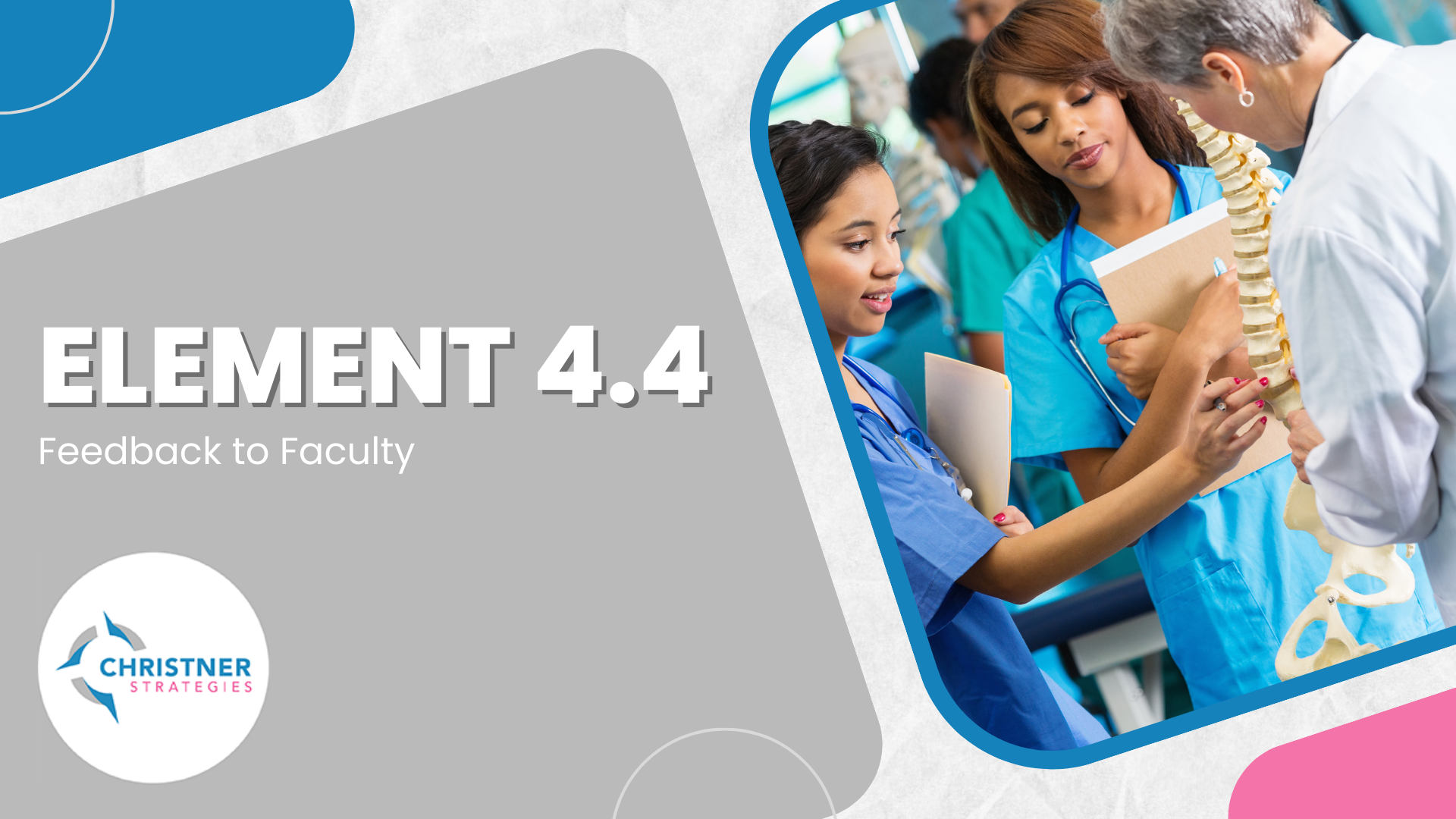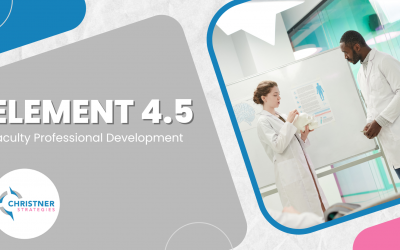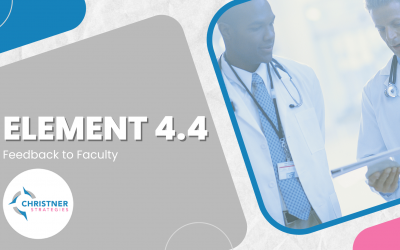LCME Element 4.4 – Feedback to Faculty
A medical school faculty member receives regularly scheduled and timely feedback from departmental and/or other programmatic or institutional leaders on academic performance and progress toward promotion and, when applicable, tenure.
Hidden Curriculum
Element 4.4 is a straightforward request, but it can grow in complexity depending on factors, such as the size of the institution, the number of geographically distributed campuses, and reliance on adjunct faculty. A first step in managing this element is understanding the different categories of faculty a program relies on for its teaching mission. There are full- and part-time faculty who receive salary support for their teaching roles, and there are adjunct faculty who assist in various capacities like precepting students. Full- and part-time faculty members must receive written annual performance evaluations whereas adjunct faculty can receive written feedback less frequently but must be regularly. In addition, the feedback for adjunct faculty does not need to be as extensive. The frequency of the feedback for all categories of faculty must be codified in policy. Another significant part of this element is the documentation of feedback. Adopt a system that captures the provision of feedback and allows both the dean/designee and faculty member to acknowledge its receipt. Note: relying solely on the faceless, digital distribution of feedback without direct communication will not cut it. This element mirrors our HR experience with performance reviews that involve dialogue designed to support growth.
Best Practices
Put the work in on the front end to ensure multiple systems are in sync to ease the annual lift for this element.
- Make a grid that clearly outlines who has responsibility for delivering feedback and at what frequency. Add this grid to the school policy for clarity. At the home campus, department chairs or designees typically meet with each member of their department to review progress toward promotion and provide an overall assessment of performance. For programs with regional campuses, it is common for the campus director to take the lead in delivering feedback to their faculty members and adjuncts.
- Design clear onboarding processes, particularly for adjuncts, that include information on teaching expectations, mechanisms of evaluation and feedback, and promotion. Some institutions also require adjunct faculty to be reviewed formally for continued appointment. Aligning this requirement from the Dean’s office will be a win-win for institutional and accreditation purposes.
- Create and maintain a database. This effort is particularly helpful for tracking and communicating with adjunct faculty who may be geographically distributed and whose participation may be more sporadic.
- Be thoughtful about the collection of student feedback and how it feeds into performance reviews (keep Element 8.5 in mind). Student feedback should not only evaluate individual faculty members but also the environment these faculty members create for learning, all of which should be shared in performance assessments. Be careful to ensure student feedback is aggregated so a student cannot be identified and may need to hold some evals if very low student numbers (e.g. on an elective) until can be certain you are protecting the anonymity of the evaluation. It will be necessary to demonstrate that faculty receive student feedback about their teaching.
Continuous Quality Improvement
Do not wait for performance reviews to discuss significant issues! Course directors must regularly monitor student feedback to detect and address problems. The spirit of this element is to provide professional development, and a school must have mechanisms that support the improvement of teaching and assessment skills (think, Element 4.5).
Electronically documenting performance feedback allows an organization to maintain a regular schedule of reviews, as well as to check for outstanding performance reviews and unacknowledged receipts of feedback.
Finally, if you elect to create a database, then regularly audit it by crosschecking the names of faculty and adjuncts against those in the school’s software platform. Doing so may uncover faculty who need to be removed due to inactivity or even lack an adjunct appointment – all possibilities in large, complex organizations.




0 Comments